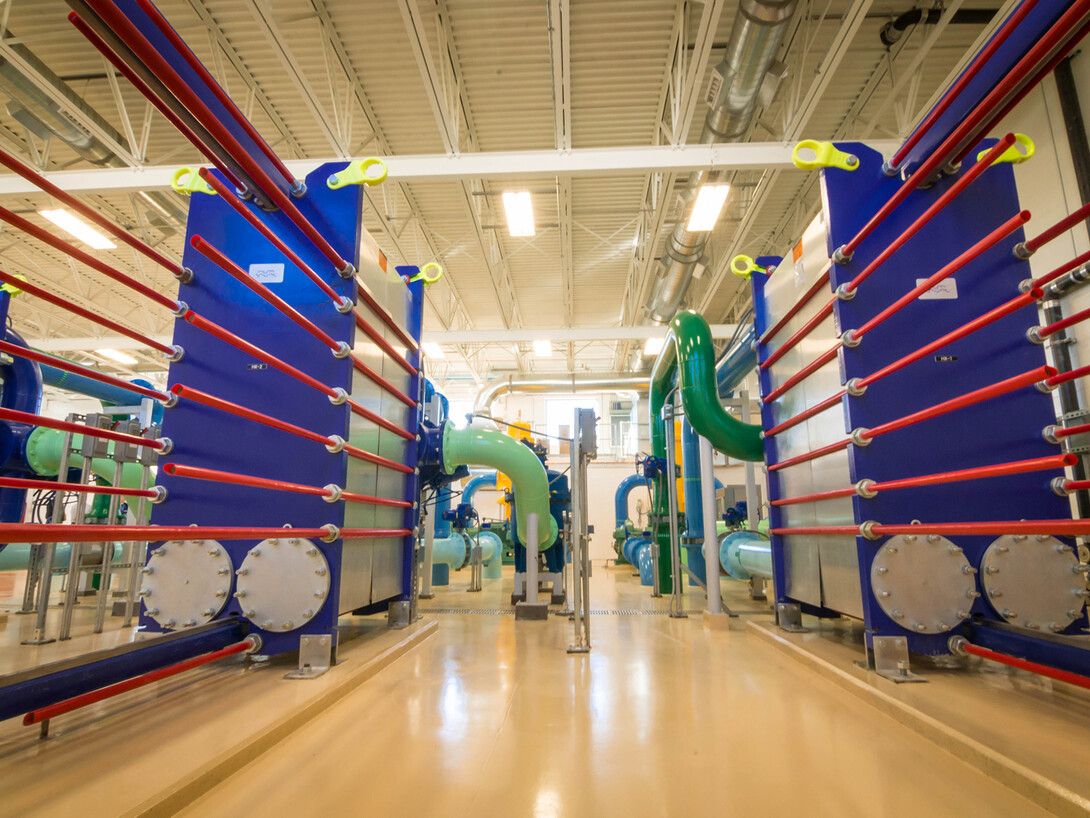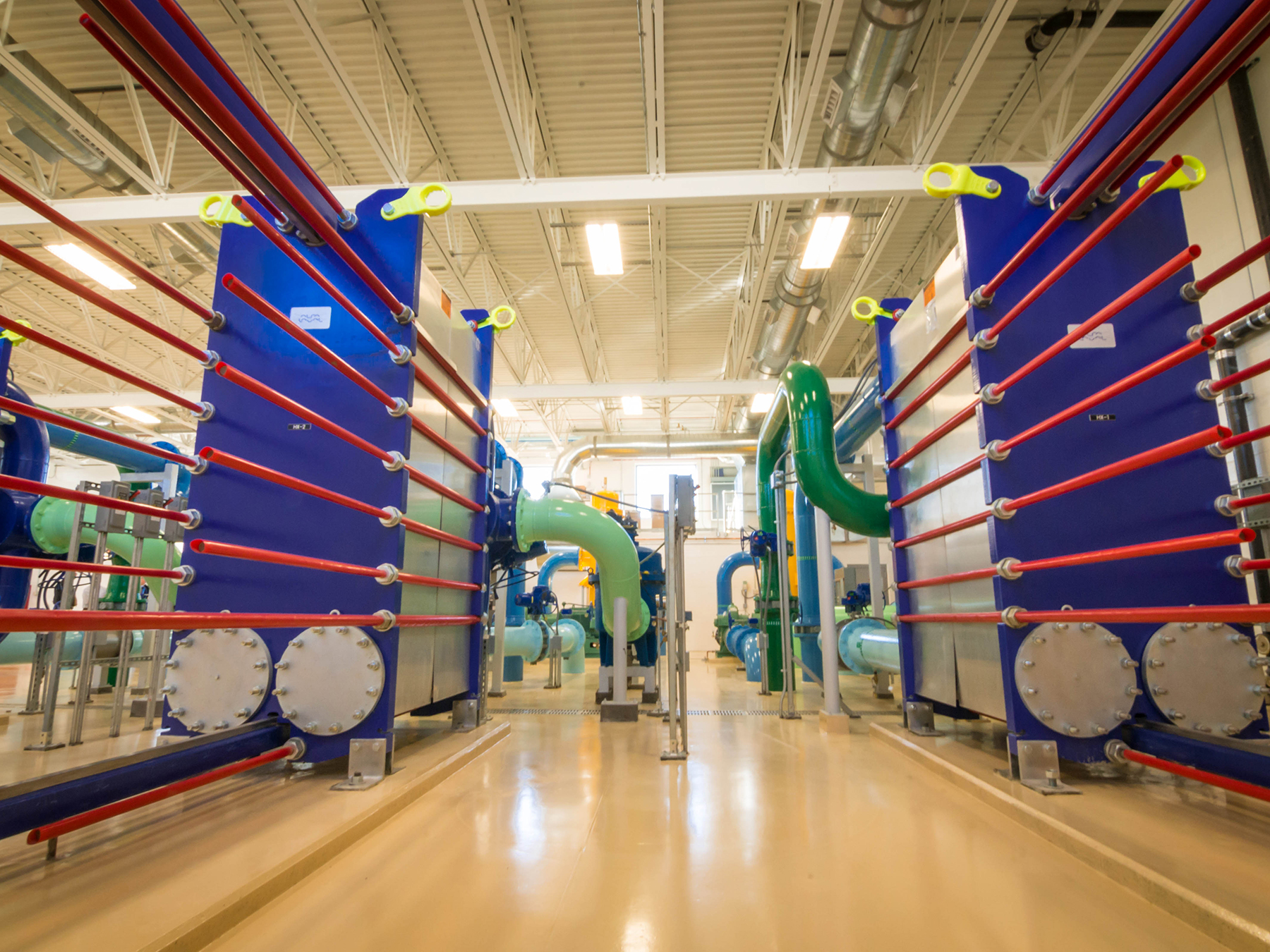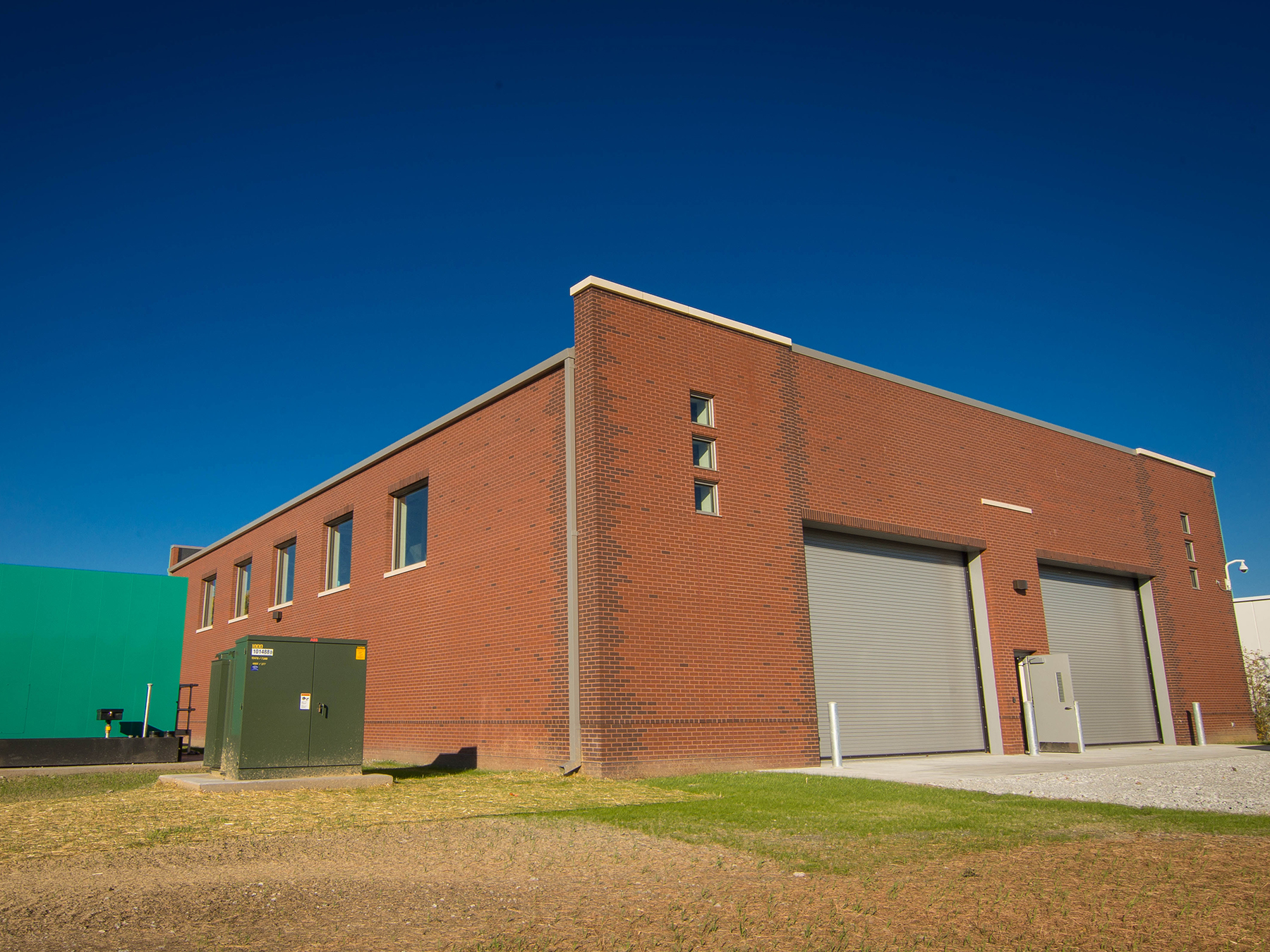
By using wastewater to heat and cool its buildings, Nebraska Innovation Campus will give off only about half as much greenhouse gas as comparable commercial buildings, a new study has found.
The findings demonstrate NIC’s emphasis on sustainability and social responsibility, said Dan Duncan, the campus’ executive director.
“It’s part of the environment we’re trying to create, the culture we’re trying to create,” he said. “We want to show that this is a different place.”
Instead of energy-gobbling boilers and cooling towers, the research campus at the University of Nebraska-Lincoln uses a stream of effluent from a nearby wastewater treatment plant to deliver heat in the winter and to dissipate it in the summer.
Engineers who designed the Centralized Renewable Energy System, or CRES, calculate it will nearly eliminate the need for natural gas for winter heating and will reduce electricity consumption for summer cooling by 25 percent.
Adam Liska, associate professor of biological systems engineering, and Matan Gill, a sustainability expert and managing principal of EpochLAB LLC in Lincoln, recently conducted a life cycle analysis of NIC’s environmental impact. Liska is an expert in life cycle analysis, which considers both direct on-site activities and off-site factors such as electricity generation in calculating a project’s environmental impact.
Liska and Gill concluded NIC’s heating and cooling system would reduce its greenhouse gas emissions by 49 percent per year when the campus reaches 1.675 million square feet of office and laboratory space in 2035.
That would equal about 15,000 fewer metric tons of carbon dioxide, methane and nitrous oxide being released into the atmosphere each year than if traditional systems were used to heat and cool the complex.
Liska said NIC’s reduced footprint is meaningful because commercial buildings are a significant source of greenhouse gases in the United States.
“According to the U.S. Department of Energy, the commercial sector uses about 20 percent of annual energy consumption in the U.S. and it produces about 20 percent of carbon dioxide emissions,” he said. “Natural gas and electricity for heating and cooling are the primary sources of commercial sector emissions.”
NIC is adjacent to the Theresa Street Wastewater Facility, which releases an average of 20 million gallons per day of treated effluent into Salt Creek along the north side of NIC.
Some of the effluent is diverted to NIC’s heat exchanger building, where it is used to heat or cool a second stream of water that circulates through a 6,000-foot underground loop of pipe encircling the campus. The effluent flows back to the treatment facility and is discharged into Salt Creek.
“It’s an energy-transfer system,” facilities manager Rhett Zeplin said. “We’re not creating (British Thermal Units) by burning fossil fuels. We’re just transferring them.”
The CRES plant’s only energy requirements are for pumps to move the water. In summer, buildings still need refrigeration systems to cool the air, but the system’s efficiency is significantly improved by using the circulating water as a sink to absorb heat from the air.
“We’re rejecting heat without the use of cooling towers,” Zeplin said. “It’s more aesthetic and efficient.”
Opened in 2014, NIC consists of about 380,000 square feet of laboratory and office space in three main buildings. Engineers estimate that the complex, when it reaches full size, will consume 207 billion BTUs per year for heating and 96 billion BTUs per year for cooling.
Using emissions data from the Lincoln/Lancaster County Health Department and the U.S. Environmental Protection Agency, Liska and Gill calculated a commercial complex with similar energy demands would generate 30,786 metric tons of greenhouse gases each year, primarily through natural gas and electricity consumption.
In comparison, the NIC would save 11,038 metric tons of greenhouse gasses each year by not burning natural gas for heating. It would save 4,937 metric tons per year by using less electricity for air conditioning. However, the campus will use 1.2 million kilowatts per year to run the CRES pumps, resulting in 826 metric tons of greenhouse gases.
Liska said NIC’s footprint could grow in the future if, for example, warmer weather requires more air conditioning or if the community adopts more alternative energy sources that would reduce NIC’s comparative greenhouse gas savings. His analysis included only greenhouse gas emissions relating to operations, not those relating to materials and construction. It also did not consider how the effluent’s temperature might affect greenhouse gases released by Salt Creek.










